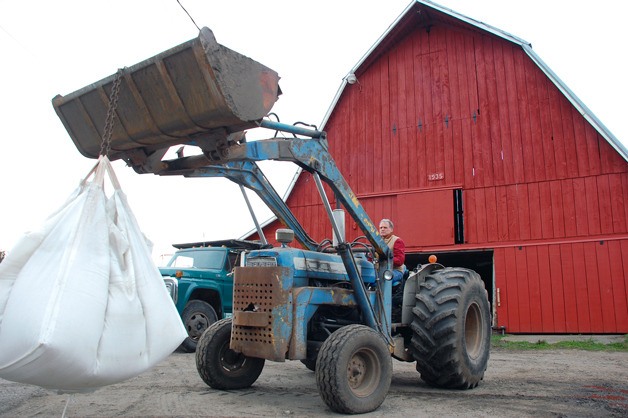A community-driven funding program that works to preserve historic buildings in Ebey’s Landing National Historical Reserve kicked off its third year with some record news.
Reserve officials last month announced the award of $100,000 from the Ebey’s Forever Fund to 13 different property owners on Central Whidbey. That’s the most money shelled out to date and to the largest number of recipients.
“It’s fantastic,” said Reserve Manager Mark Preiss, of the programs success. “Of course we’re tickled.”
Some of the most recognizable buildings that will get help this year include the 1934-built Comstock Barn, located near the intersection of Engle and Hill roads; the Captain Whidbey Inn, built in 1907; the old San de Fuca Store, off Highway 20; and the old county courthouse, 1855, on Madrona Way.
The work to be done will vary by project but they generally include repairs ranging from roof replacement and stabilization work to deck replacement and general maintenance.
Although still relatively new, the program has grown quickly in popularity and effectiveness. In its first two years alone, the program assisted 17 property owners and raised nearly $130,000 in donations for contributing structures.
According to Preiss, its success is evidence that alternative funding programs which leverage community support are not only effective but are a demonstration of the public’s commitment to historic preservation.
“Clearly, they recognize the importance of community involvement in these heritage resources,” Preiss said.
“The money raised speaks for itself,” he said.
The program began in late 2010 at the annual Ebey’s Forever Conference when the Pickard family announced a financial grant challenge. Any money donated by the community for the preservation of historic structures within the reserve would be matched by up to $50,000.
At the time, and continuing to this day, government funding can be hard to come by. Old buildings are expensive to maintain and property owners are left with the responsibility of keeping up structures that they sometime can’t even use.
The idea behind the fund was simple; to foster a program that would provide enough financial assistance to property owners that they would reinvest in the old buildings.
For example, a barn built by Clark Sherman in 1935 was used for many different things over the decades but heavy farming use had taken a toll on the nearly 80-year-old structure.
The building was in such disrepair that Don Sherman, Clark’s grandson and the current owner, had all but stopped using the second story for fear of its structural stability. While he never planned to abandon the building, the expense of repairs delayed its rehabilitation.
The Pickards’ challenge was met and Sherman was one of the first grant recipients. Worn out siding was replaced, the second story doors were repaired, and the eyebrow-raising tilt to the north stabilized.
That financial help was one of the big reasons the project got done when it did, Sherman said.
“It was a really important consideration,” Sherman said.
“I really give all those guys credit for getting this going,” he added.
Linda Bartlett, co-owner of Rosehip Farm & Garden, was a grant recipient last year and the Sam Keith Farm Shed, a small building located next to her home, received a major overhaul.
“It was pretty unusable … It was more like a lean-to than a building,” she said.
Trying to take on expensive projects like that can be a “daunting” task when you’re trying to run a successful farm, Bartlett said. Like Sherman, she said the end result is that renovations and even maintenance can be pushed back.
“We might have been able to do this ourselves, but this allowed us to make it a priority,” she said.
In both cases, the funding program not only enabled property owners to fix historic structures that had fallen into disrepair, but also, and just as importantly, to put them to use.
According to Preiss, that’s a big part of keeping these buildings alive and maintaining the fabric of a working, cultural landscape.
It may also be a big reason for the program’s popularity among working farmers, as many now see the fund as a realistic source of assistance. Only one of the 14 applicants for the 2013 grants did not move forward.
By comparison, similar state programs can be highly competitive.
The community’s investment has also increased, with more money raised each year.
An anonymous donor issued a $75,000 challenge grant and, like the Pickards’ initial challenge two years ago, it was met by the public.
“This has it’s own energy now,” Preiss said.
For working farmers like Sherman, the program has provided welcome financial assistance and made an old building more usable. It also just happened to make a historic structure that’s close to his heart a little easier on the eyes.
“It’s nice to see the old girl with some paint on her,” Sherman said.



